|
|
|
|
|
|
|
|
November 17, 2022 | ISSUE 52 |
|
|
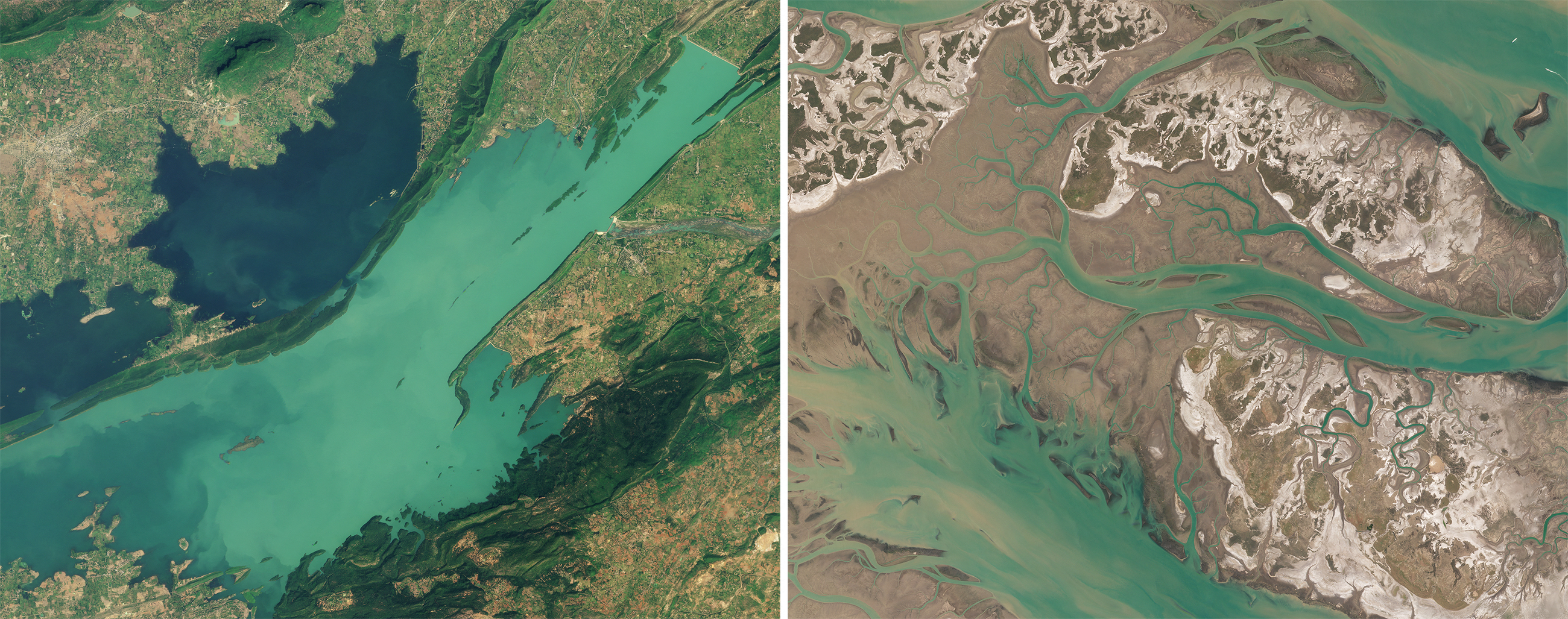 |
PlanetScope • Ban Sagar Lake, India & Bahía Blanca, Argentina • 29 x 23 km / 18 x 14 mi • October 28 & November 5, 2022 |
In this week’s issue: We look at scenes of Earth scaled proportionally; a cemetery for airplanes is spotted in Arizona; and a volcano erupts in eastern Russia.
We’re off next week for Thanksgiving, so we’ll see you after the break—refreshed, stuffed, and ready to close out the year with some issues we’re eager to share.
Having trouble viewing images? Then read this issue on Medium!
|
|
|
|
|
FEATURED STORYSize Comparisons 2
Theodore Roosevelt reportedly said that “comparison is the thief of joy.” If you’re growing out a mustache, then comparing yours to Teddy’s is certainly a path toward sorrow. But in many other respects comparison is useful. And it’s practically the only tool available for making sense of relative sizes. How else can we try to comprehend the size of the universe or the subatomic realm other than measurement and comparison?
In the first installment of this topic we got into the nitty-gritty of using comparisons as a tool for perceiving scale in satellite images. But unlike last time, we’re not going to only compare nature to cities (though there will be some). Instead, we’re taking a Picasso-like step further into abstraction and comparing scenes you may not have seen beside each other before. And since we’re off next week we’re doubling the images and scaling back the words. So let’s get to it.
|
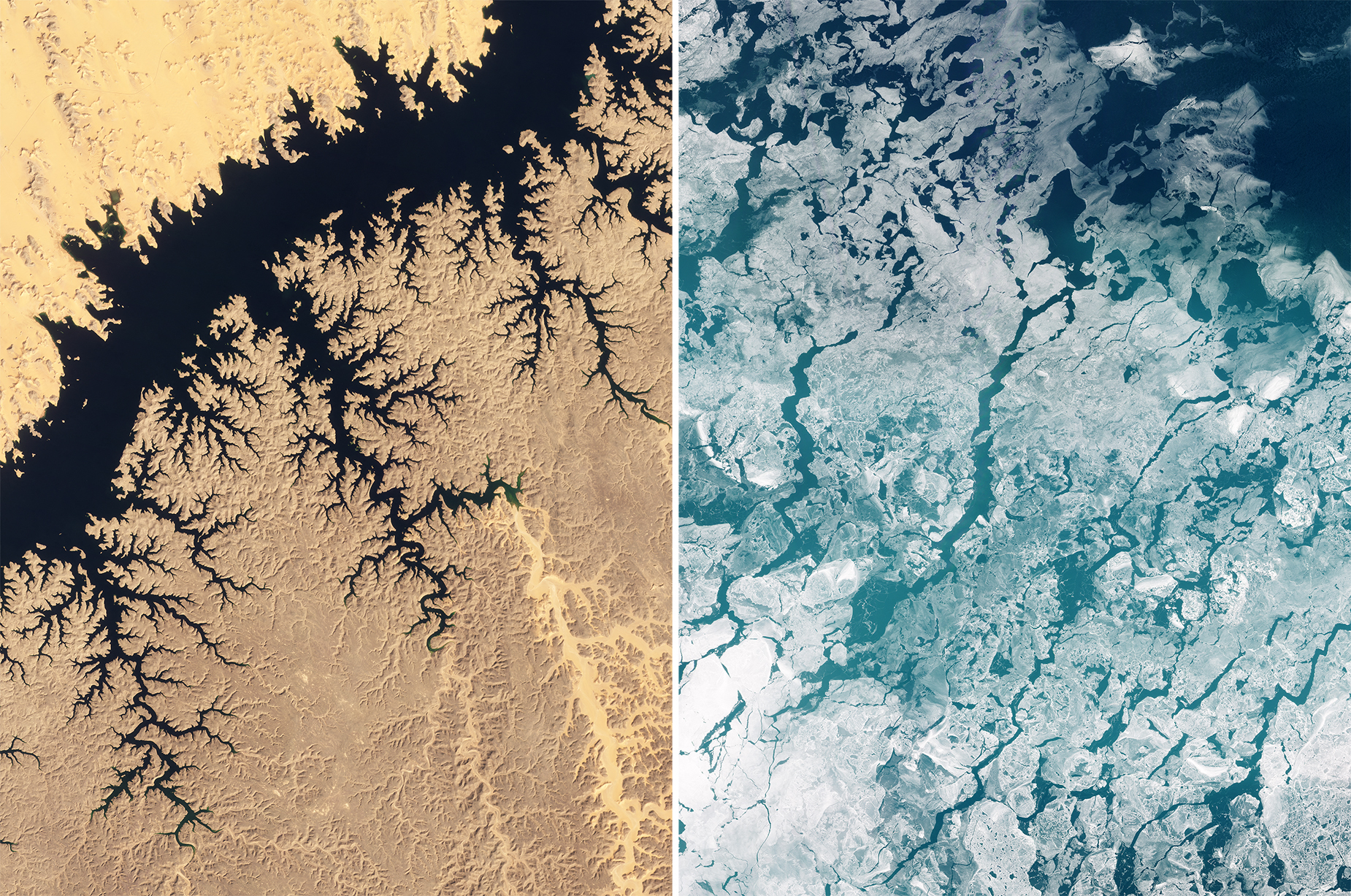 |
PlanetScope • Lake Nasser, Egypt & Lake Erie, US/Canada • 25 x 34 km / 16 x 21 mi • October 25 & March 4, 2022 |
Like Issue 41, the dimensions of these diptychs are proportionally scaled. But it’s worth noting that a lot of resolution is lost through email. Each of these images show a snapshot of Earth somewhere along the magnification gradient between our most scaled-back view of Earth and sharper detail on the ground. Like in the example below, these slides of the planet are like nesting dolls near the middle—you can get bigger or smaller. |
 |
PlanetScope • Rushville, IL, US • September 29, 2022 |
Perhaps nothing bridges the big to the small as eloquently as fractals. These are self-similar, ever-repeating patterns found from the microscopic to the cosmic (check out Issue 19 for a deep-dive on them). As above, so below—so they say. |
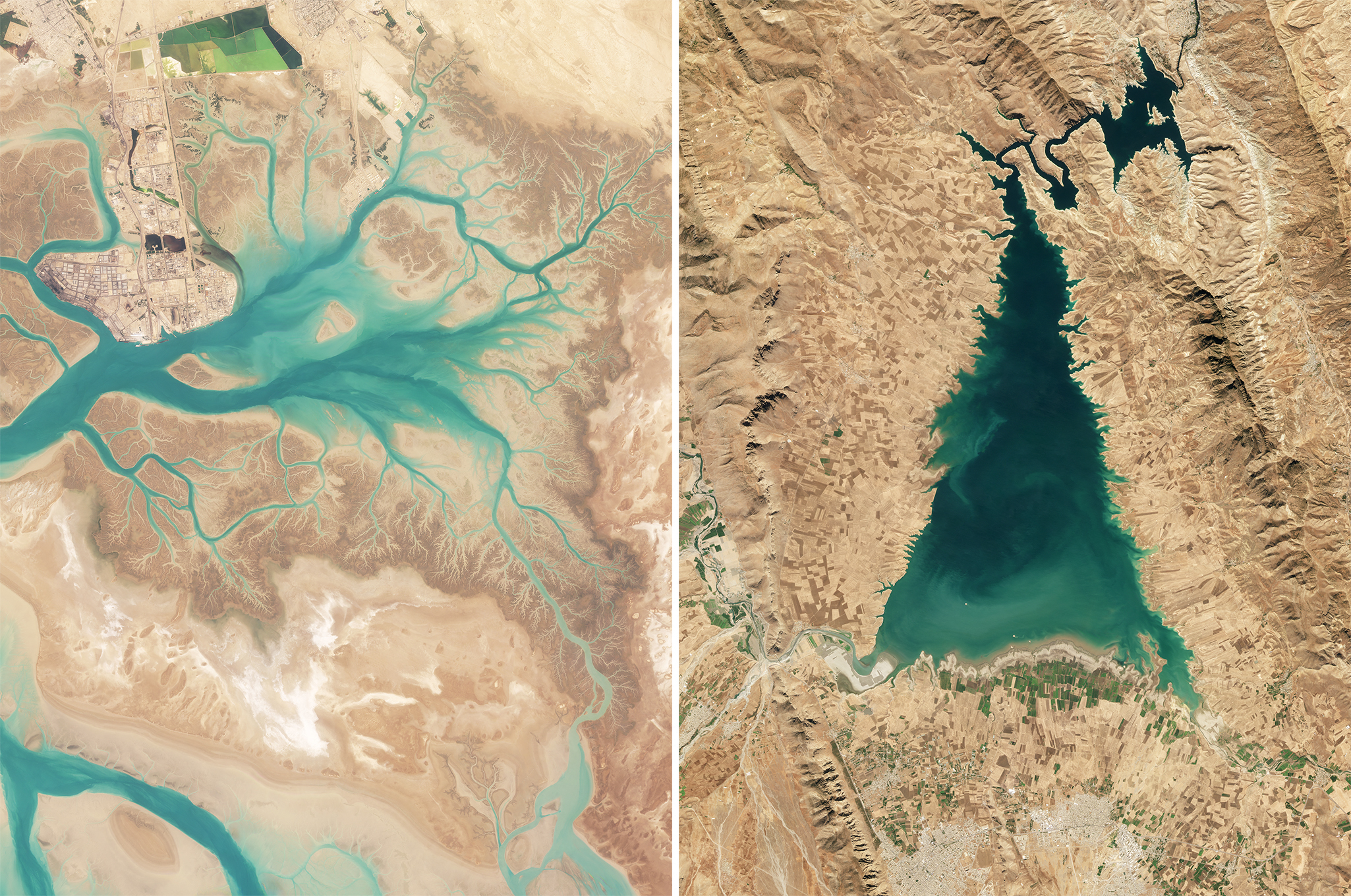 |
PlanetScope • Bandar Imam Khomeini, Iran & Lake Dukan, Iraq • 28 x 37 km / 17 x 23 mi • October 20 & 2, 2022 |
Maybe everything in the US really is super-sized, or maybe the Italians enjoy things on a smaller scale (we’re looking at you, espresso). Either way, Wisconsin's impressively large crossed-highways just about cover the extent of Venice’s labyrinthian canals. |
 |
SkySat • Venice, Italy & Zoo Interchange, Wisconsin, US • 1.9 x 2.5 km / 1.2 x 1.6 mi • June 19, 2020 & October 4, 2022 |
Deserts are found on every continent and cover over 1/5th of Earth’s ground area. Here’s a section of Iran’s Lut Desert next to one of our favorite fractal-packed places on Earth. |
 |
PlanetScope • Lut Desert, Iran & Derby, Australia • 36 x 48 km / 22 x 30 mi • September 27 & 20, 2022 |
Icebergs are famous for being more than meets the eye, with significant portions of their mass hiding underwater. But they’re still pretty huge from above. Here’s an iceberg (a little smaller than midtown Manhattan) breaking off from its larger parent A68a (just over 100 times larger than Manhattan). It’s not the iceberg that sank the Titanic on its way to New York, but it sure is intimidating. |
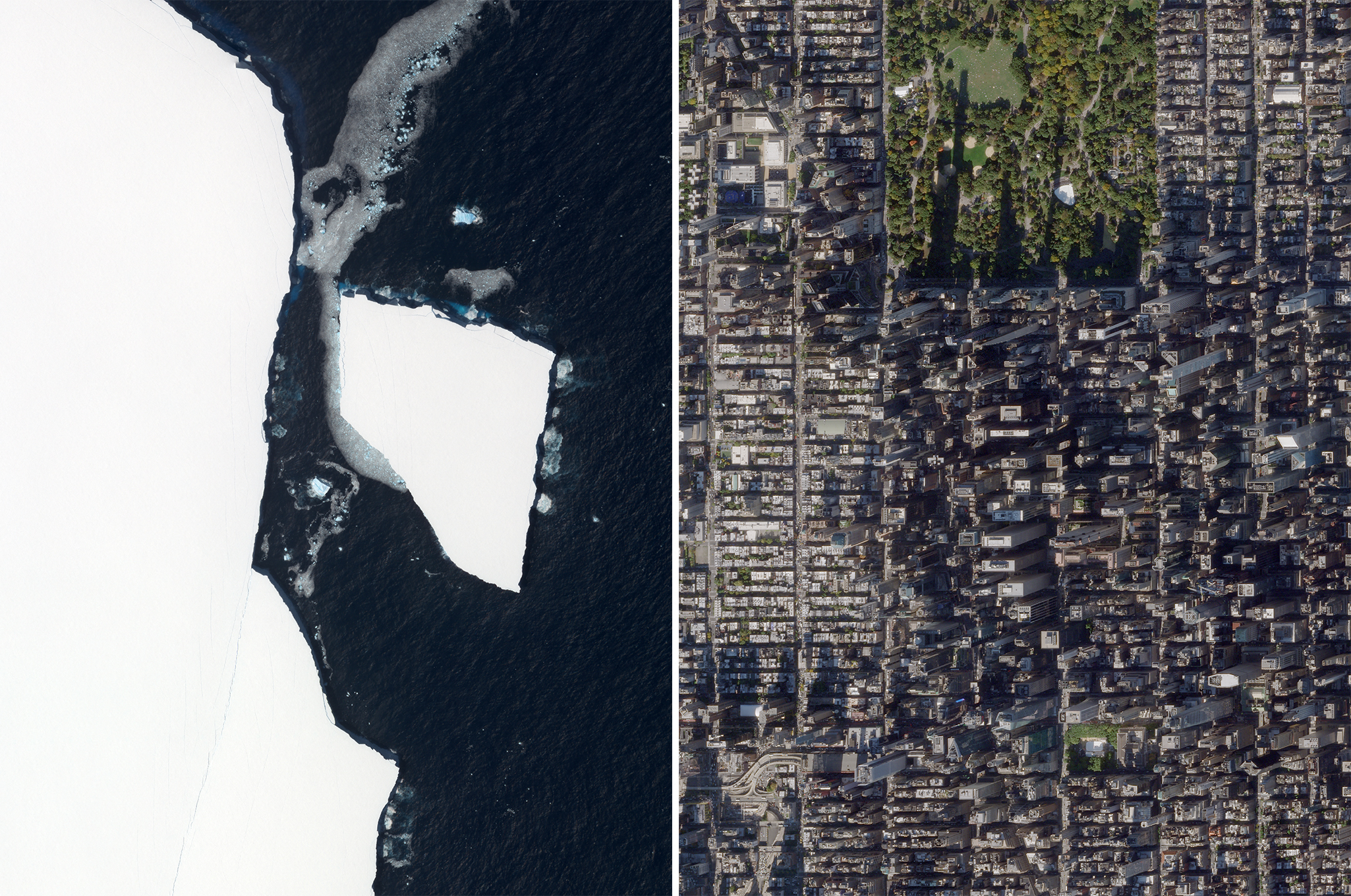 |
|
SkySat • Iceberg A68a, Antarctica & Manhattan, NY, US • 2 x 2.8 km / 1.2 x 1.7 mi • November 29, 2020 & October 22, 2022 |
Algae are the ants of the ocean: small but mighty in number. Here’s an algae bloom in the Bristol Channel next to some scenic facilities in China. |
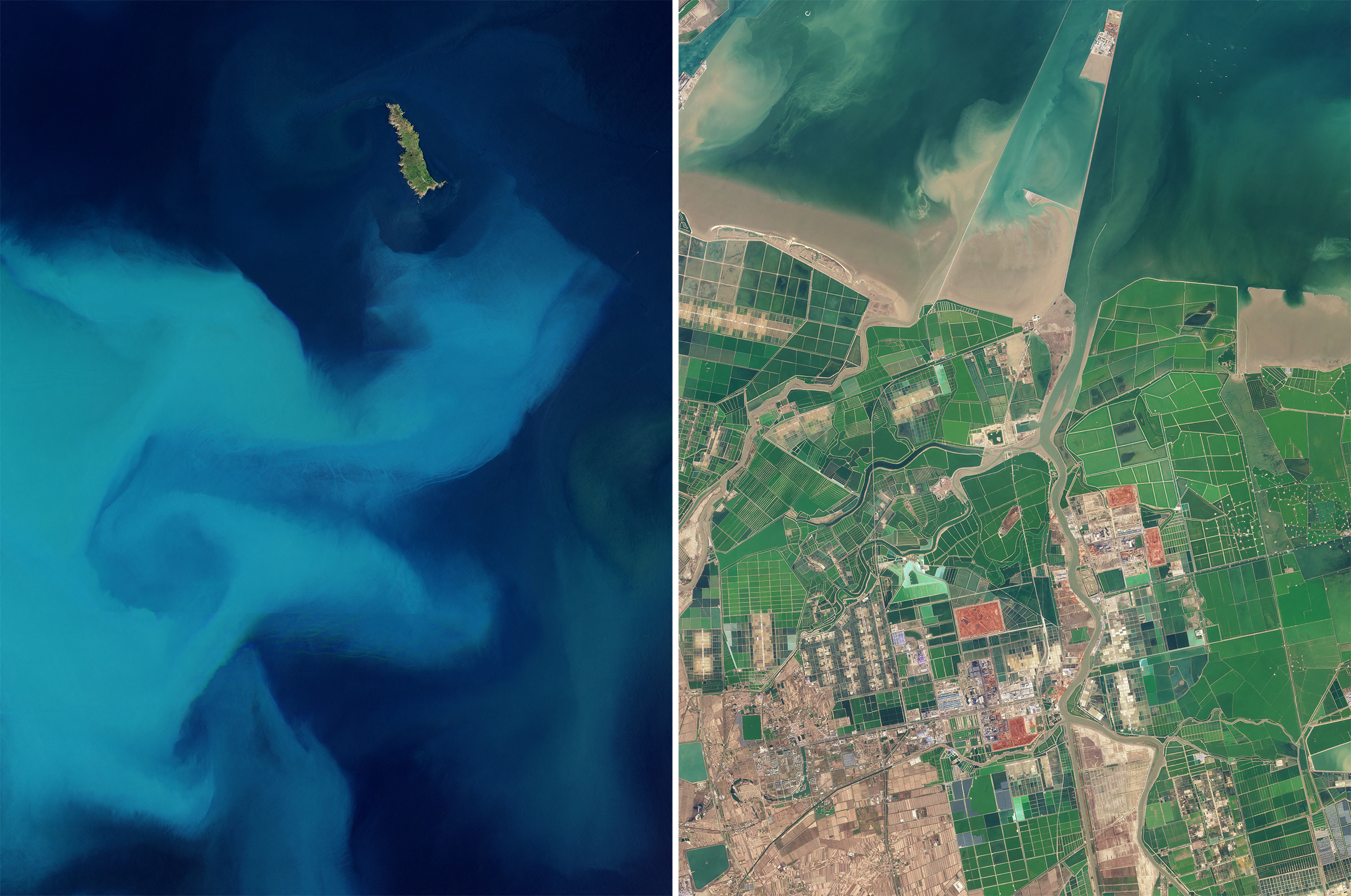 |
PlanetScope • Lundy, Bristol Channel, UK & Cangzhou, China • 33 & 44 km / 21 x 27 mi • June 3 & October 23, 2022 |
Everything is bigger in Texas, as the saying goes. So it should come as no surprise that over 40% of US oil production comes from the Permian Basin within the state. We can’t see the oil beneath the surface, but we can spot the array of pumpjacks sipping it out. |
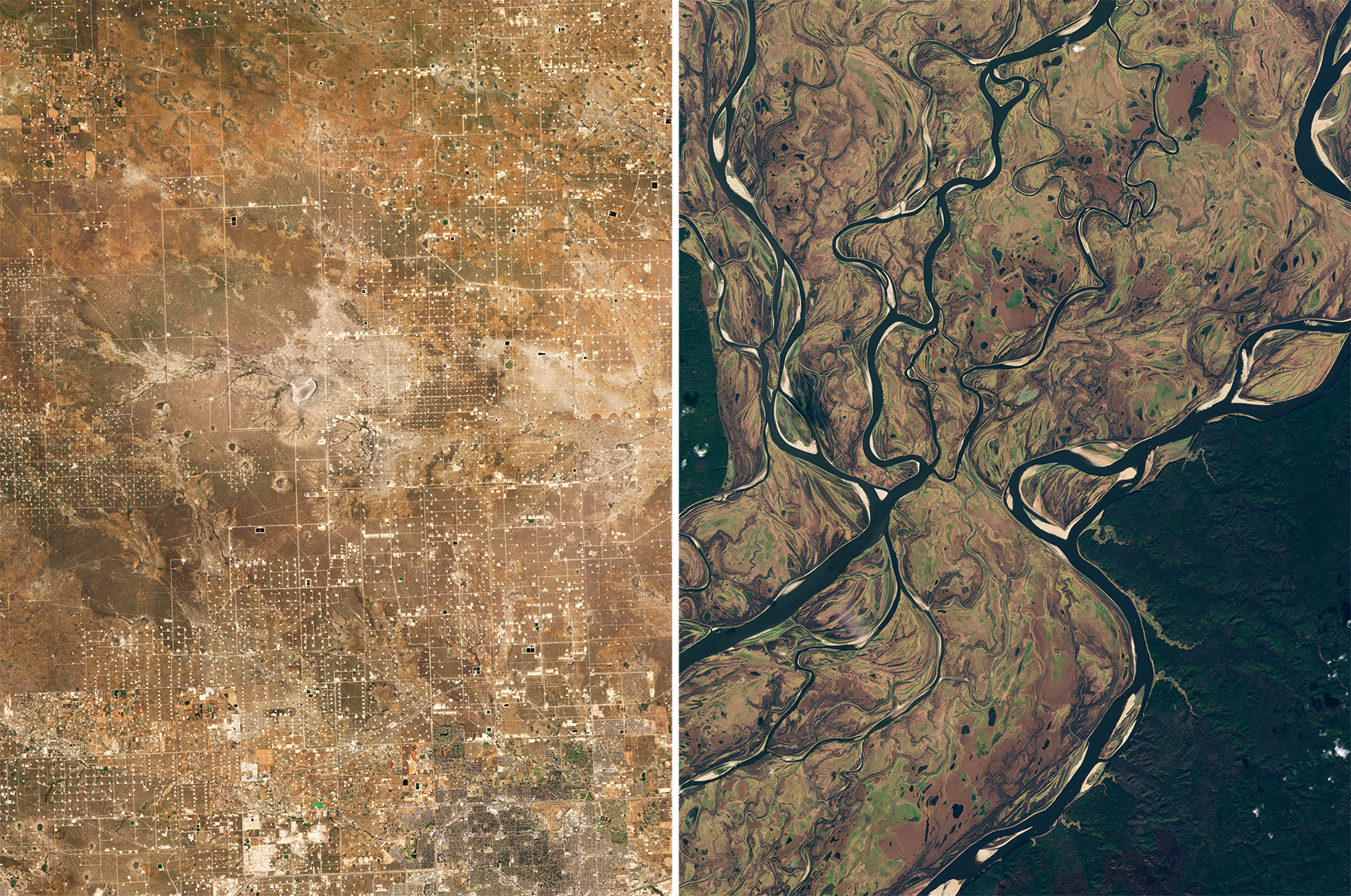 |
PlanetScope • Permian Basin, Texas, US & Ob River, Russia • 34 x 46 km • 21 x 29 mi • October 25 & 11, 2022 |
If you’ve ever wondered whether we’re bigger than we are small, or smaller than we are big, you’re not alone. The universe is vast and the quantum world is tiny (to say the least). We’re somewhere in the middle—curious, confused, and just trying to make sense of it all. So hopefully these comparisons helped and gave, not stole, some joy. |
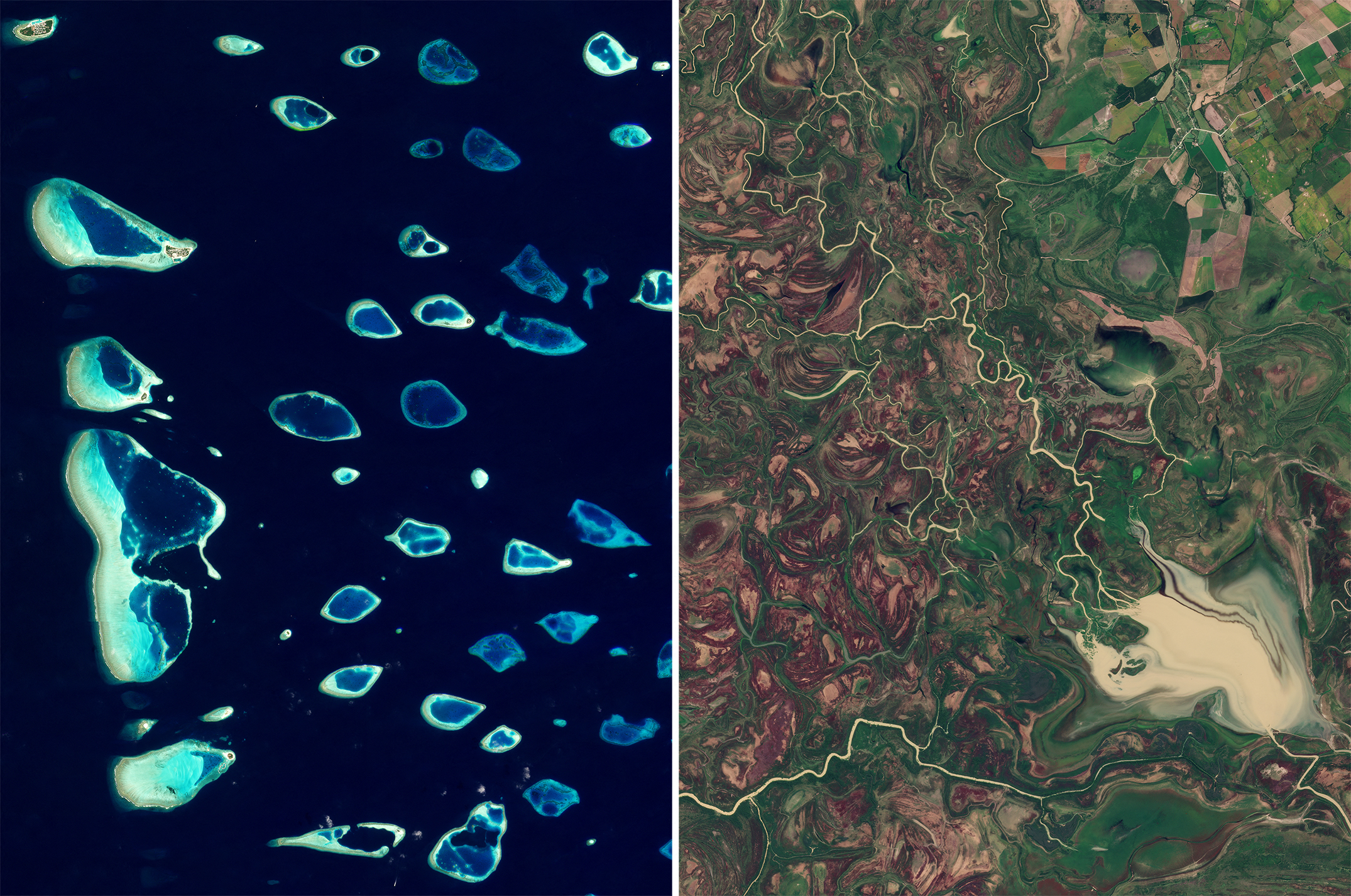 |
PlanetScope • Maldives & Victoria, Argentina • 20 x 26 km / 12 x 16 mi • February 21 & October 11, 2022 |
|
|
|
|
|
|
|
|
|
|
|
Chromeyard
The world’s most expensive dump is likely in Tucson, Arizona. This defunct military aircraft resting place is officially called the 309th Aerospace Maintenance and Regeneration Group, the Airplane Boneyard for short, but called Chromeyard by us because it has a nicer ring to it. It’s got over 3,000 aircraft and 5,900 engines rusting under the hot Arizona sun. And for good measure we’ve thrown in another size comparison of Kitty Hawk, the home of the Wright Brothers’ first successful flight in 1903.
|
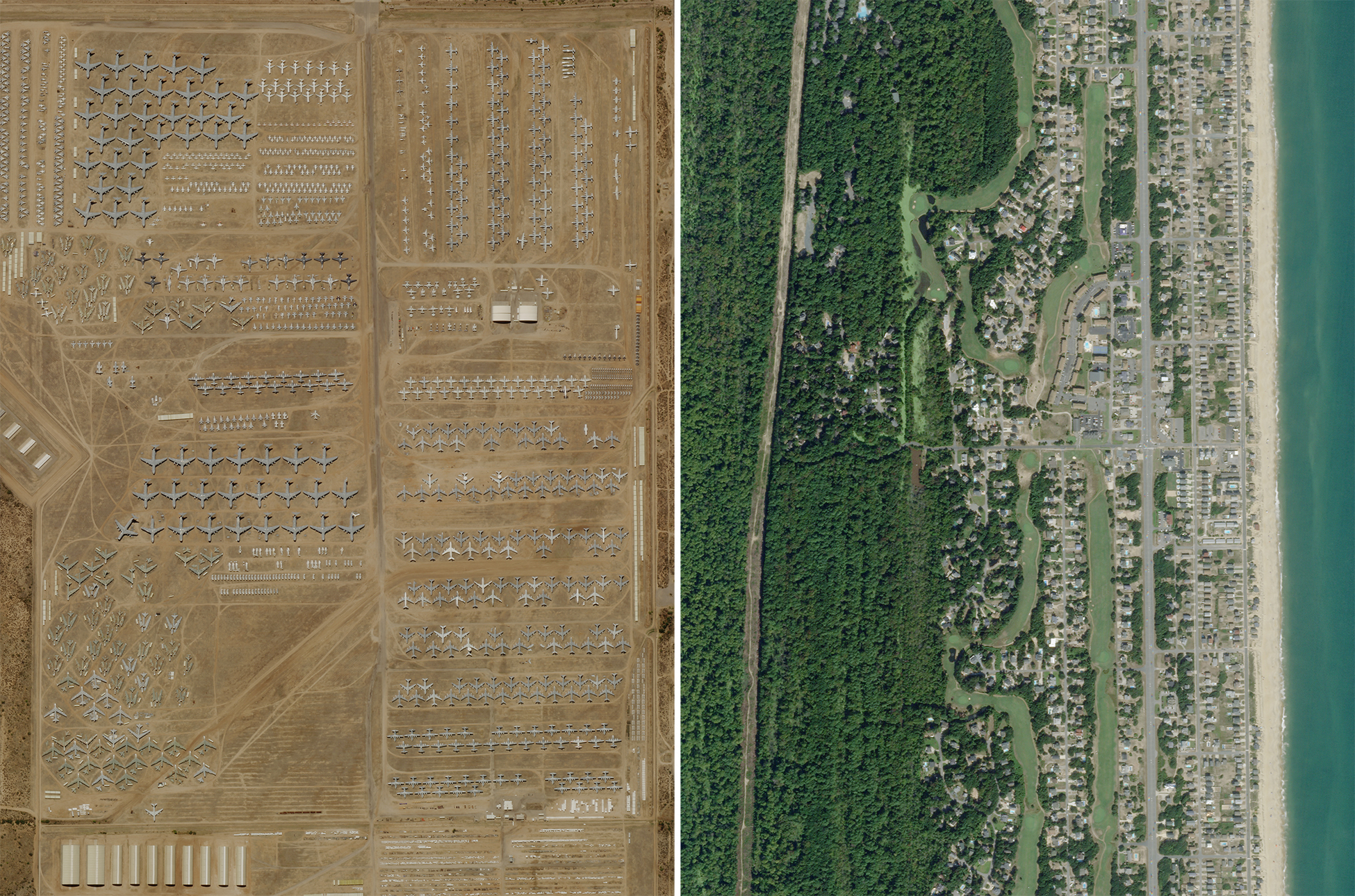 |
SkySat • Airplane Boneyard, Arizona & Kitty Hawk, • 1.7 x 2.3 km / 1.1 x 1.4 mi • April 13, 2022 & September 28, 2021 |
|
|
|
|
|
Eruption
With one exception, Russia’s Shiveluch volcano has erupted each year since 1984. One of our SkySats captured this year’s eruption as steam pours out of its cratered dome. It’s not a huge eruption, compared to its active history, but it’s mesmerizing nonetheless.
|
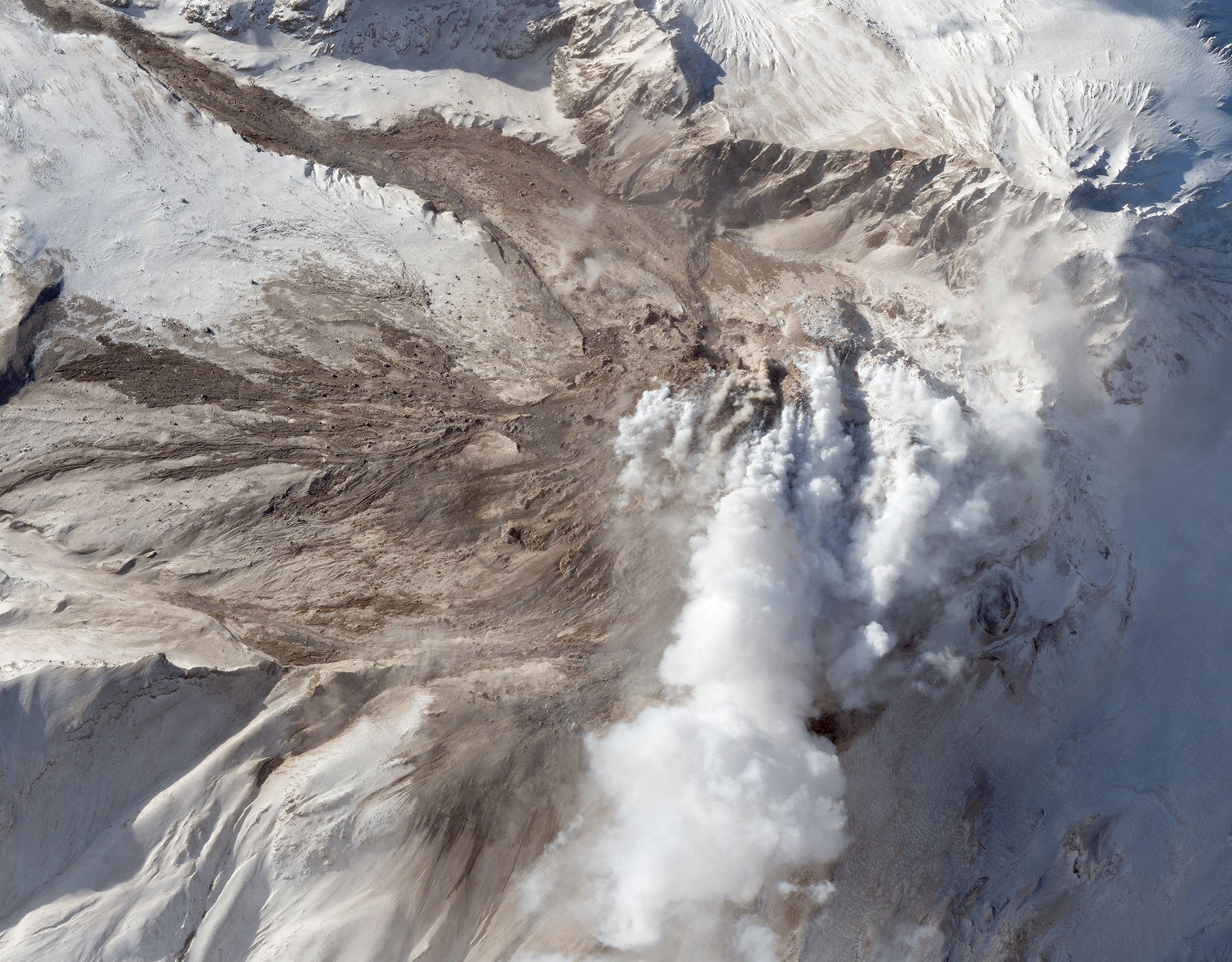 |
SkySat • Shiveluch, Russia • November 8, 2022 |
|
|
|
|
|
Weekly Revisit
Last week we explored how countries and communities are preparing to adapt to the effects of climate change. There was prescribed burning, greening cities, and a lot of sea walls. So take a peak in case you missed it and check out the whole archive for more.
|
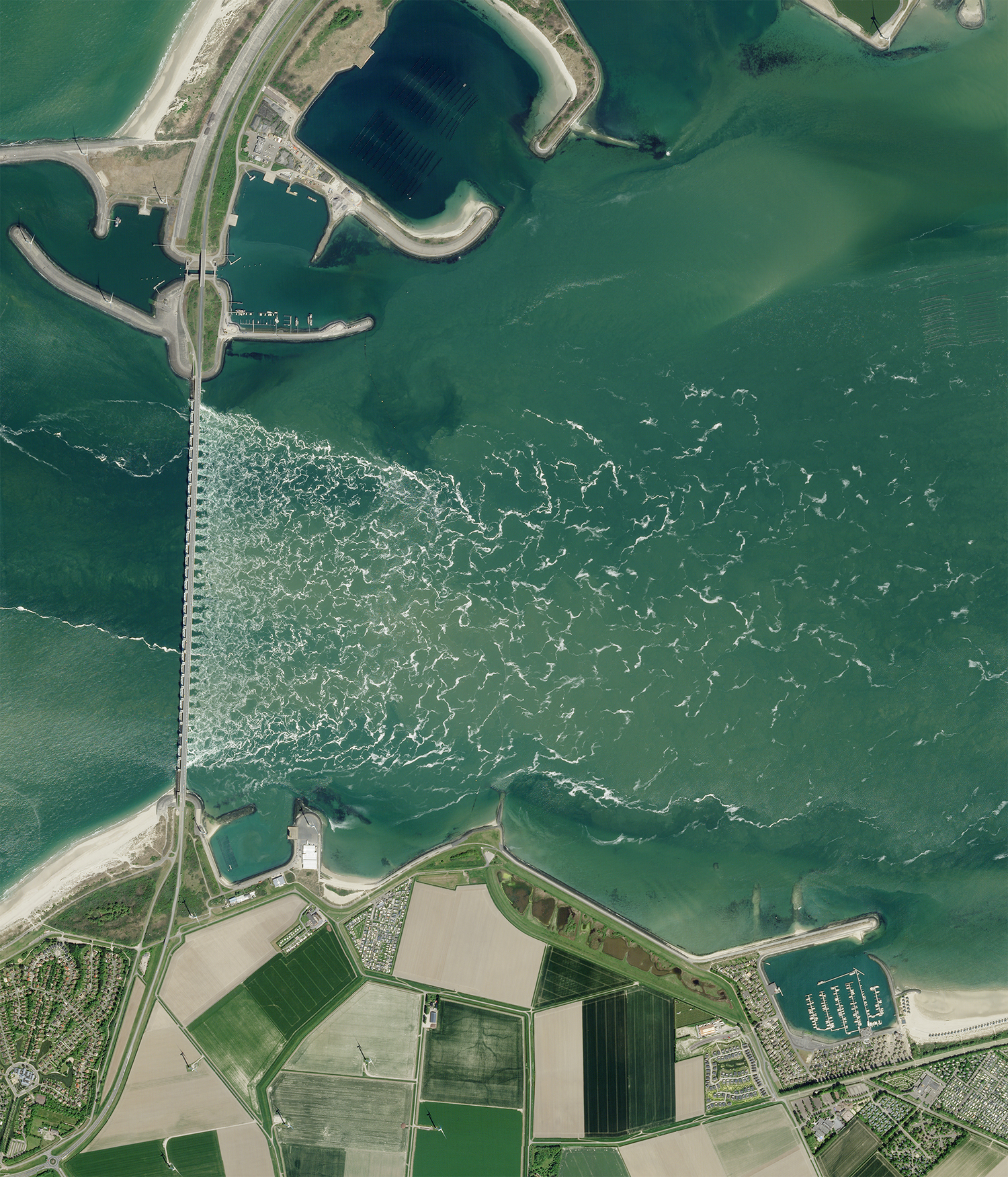 |
SkySat • Eastern Scheldt Storm Surge Barrier, The Netherlands • May 6, 2020 |
|
|
|
|